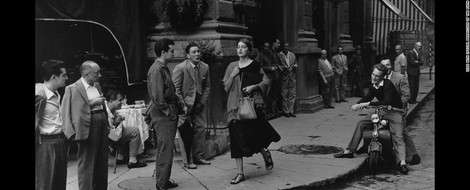Your podcast discovery platform
Curious minds select the most fascinating podcasts from around the world. Discover hand-piqd audio recommendations on your favorite topics.

piqer for: Climate and Environment Global finds
Born in the south of Mexico, she was raised in rebel Zapatista autonomous municipalities to later settle down in San Cristobal de las Casas where she cofounded ''La Casa de las Flores'', a non-profit dedicated to educate, feed and care for the marginalized children living on extreme poverty in the streets of her city. After graduating from Nursing school she enrolled in Biotechnology and Astrophysics.
Historical Photos From Points Of View You've Never Seen Before
It’s estimated that 1.2 trillion photographs were taken in 2017. Assuming you would shoot one photograph each second, it would take about 125,000 years to reach that number.
8.95 million photos and videos are shared on Instagram per day and, according to Business Insider, 8,796 pictures are shared on Snapchat per second. Each one of us on average snaps more pictures in a day than the whole of humanity did in the 1800s.
Cameras existed way, way before photographs. They evolved from camera obscura and have been changing throughout centuries, from weighing nearly four kilos and taking half a minute to snap to today’s 4K resolution, extra compact photographic devices. The first somewhat successful photograph was taken in approximately 1816 by Joseph Nicéphore Niépce. It took him eight hours of exposure to achieve it. Niépce was, however, better known for his invention of a propeller for boats.
The world has changed since Niépce shot his first photograph 202 years ago. Wars, rebellions, revolutions, discoveries, deaths and births: the astounding events that before could only survive through storytelling have two centuries of being captured through photographs. This slideshow brings us the best of them, taken from points of view that we might never have considered before.
Stay up to date – with a newsletter from your channel on Global finds.
